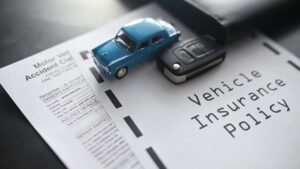Finding the appropriate car insurance can save you hundreds of dollars each year. When searching, make sure to compare rates and coverage options as well as consider each company’s customer service, financial stability, and claims processing capabilities.
Start by gathering quotes with similar policy limits and deductibles from multiple insurers, then review customer complaints filed against companies through your state’s insurance department.
1. Know Your Needs
Understanding what your needs for auto insurance are can help you narrow down the options and find the perfect policy. From protecting yourself against liabilities to making sure your vehicle is roadworthy in case of an accident, knowing your priorities is an invaluable way to choose appropriate types and amounts of coverage.
As with any purchase decision, cost should also be an integral component. Although you might be tempted to choose the least expensive provider, opting for customer service and track record matters more when selecting an insurance carrier that can support you when needed most. Check third party ratings like JD Power or AM Best ratings to gain a better idea of their customer satisfaction ratings.
Remind yourself that factors like the age and driving record of drivers living in your household, home ownership status, filing an auto claim in the past and make/model of vehicle may have an effect on rates; certain cars can be more costly to repair or more likely to be stolen than others; plus your location, driving habits and work history all play a part.
2. Compare Quotes
Your quote will depend on the information that is provided about yourself and your vehicle, so make sure that all relevant personal and car data is ready when starting to quote in order to expedite and improve accuracy in getting quotes faster and more accurately. Know your desired coverage limits, whether or not you require collision and comprehensive insurance, as well as any additional options such as roadside assistance or rental car coverage. As well as knowing the make and model of your vehicle, its VIN number (check your registration) and any safety features it has which could lower its premiums, some insurance companies also may require information about your driving history or even use credit-based scoring to assess risk classification – if this is something that bothers you you can inform them not to consider such aspects when quoting policies.
After gathering several quotes, take time to compare each in detail. Check that every policy contains similar coverages, limit amounts and deductibles in order to ensure an equal comparison. Also take care to read any exclusions or limitations that might cause problems for you – these might not appear until after purchasing insurance policies! Additionally, look at customer service ratings as well as investigating financial stability through an agency such as AM Best; that way you’re sure your chosen insurer can pay out claims reliably even during difficult times.
3. Choose Your Policy
Finding the ideal policy requires careful evaluation and reflection. Factors that impact premiums vary among insurance carriers; for instance, some may place greater weight on factors like credit-based insurance scores while others place greater focus on where you live, the type of car you drive, and repair costs after an accident.
Once you understand your specific needs, it’s easy to compare quotes for policies tailored specifically for them. Be mindful of premium payment frequency; choosing to make annual payments may save money over time as it allows a single upfront payment instead of spread across time.
Not only should you select an insurance policy tailored specifically to your individual needs, but you should also select an insurer with a strong track record for customer service and financial stability. Failure of an insurer to fulfill its contractual obligations in the event of a claim could impact future premium rates significantly.
Other key aspects to keep in mind include your deductible amount – this is the sum you will be required to pay in case of an accident, before your insurer begins paying claims. Also make sure you understand all available discounts which could save money off of premium costs.
4. Make Payments
When selecting car insurance policies, several factors should be kept in mind. Be sure your policy meets state requirements and check with your local insurance department if they have any complaints against it. Furthermore, keep your credit and driving history as clean as possible as these two aspects impact premium costs.
Most companies provide two options for paying your premium: either in one lump sum payment, or by spreading it out over several monthly installments. No matter your choice, make sure that it arrives on time to avoid coverage lapses or late fee penalties.
If you opt for full payment, your insurance provider may offer a discount. If monthly payments are chosen instead, make sure that automatic withdrawals from your bank account are set up so as to prevent missed or late fees from incurring.
Most insurance companies now accept credit cards as payment for premiums, which may save you some money by accruing points and rewards on purchases. But be mindful that interest charges may offset any savings accrued through using this payment option; cash payments can still be submitted, just be sure to mail or hand deliver them well ahead of their due date or to an agency location in person.




